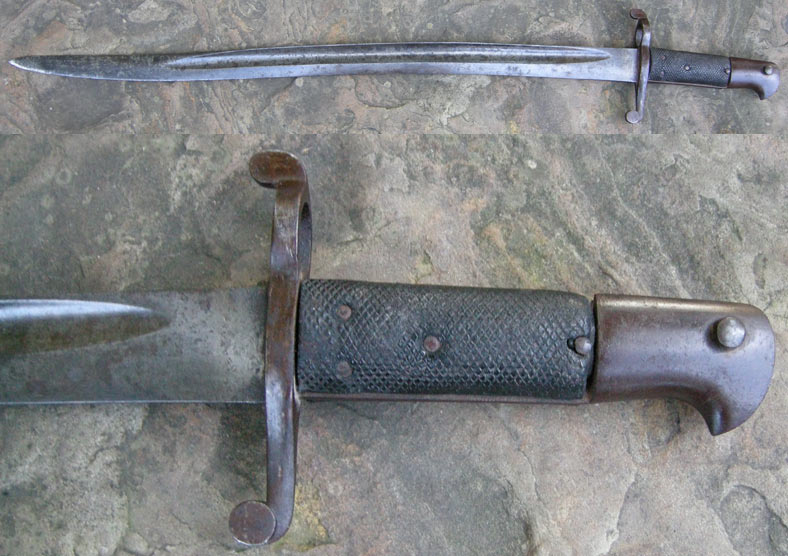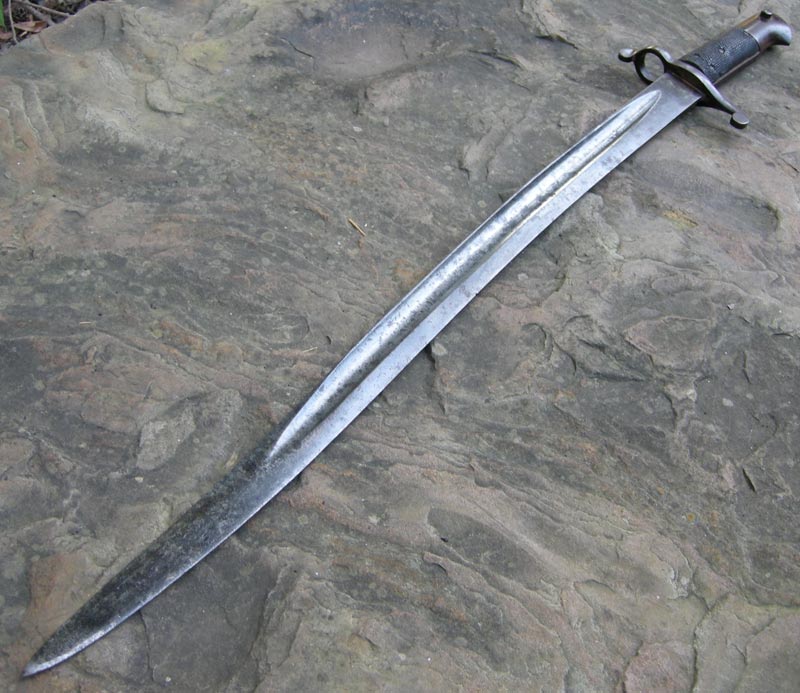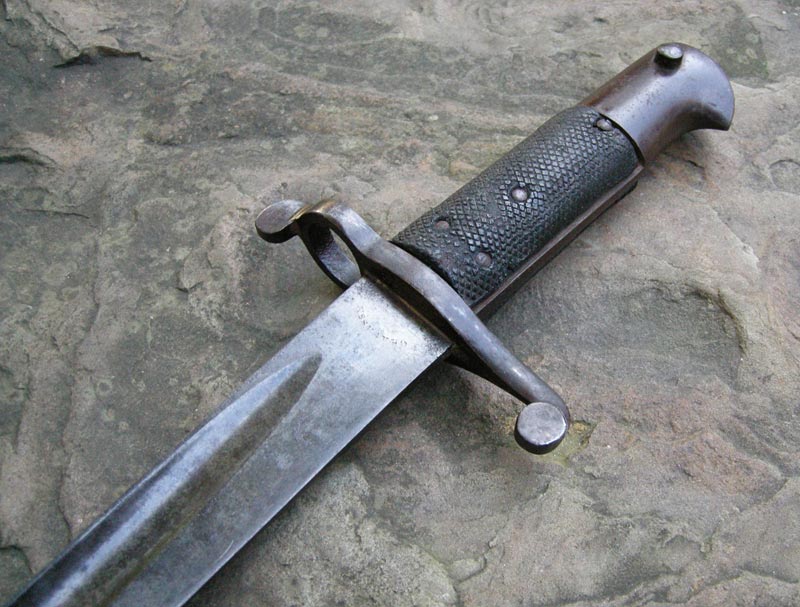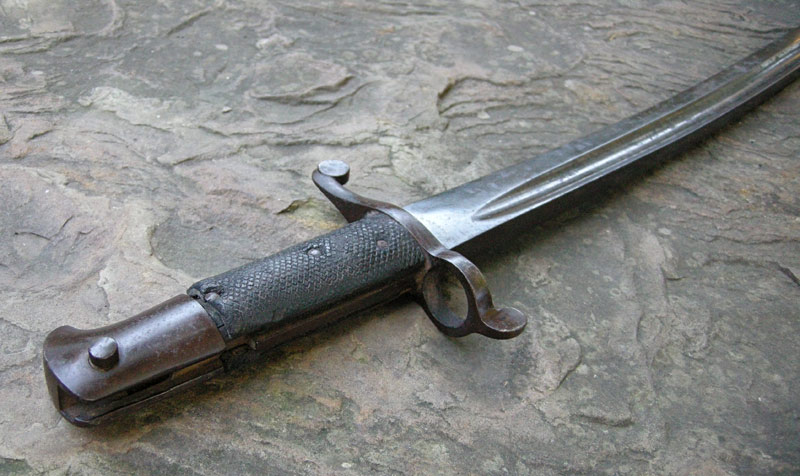Overall length is 28 inches.
Blade Length 23 inches.
PoB is 3 inches from guard.
Weight is 1lb. 11oz.
If swords were attached to rifles in their declining days and then these sword bayonets became progressively shorter. Then swords may still be around in vestigial form as knife bayonets. Actually not truly vestigial as, in certain circumstances, they still perform the primary function of a sword.
It would be interesting to here your thoughts on this and if there may be other vestigial forms of swords still in use today?




